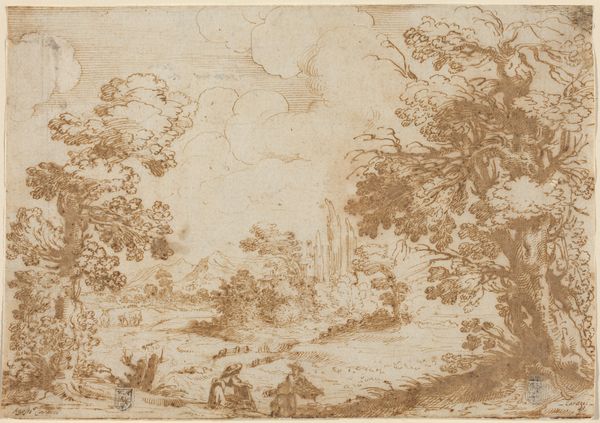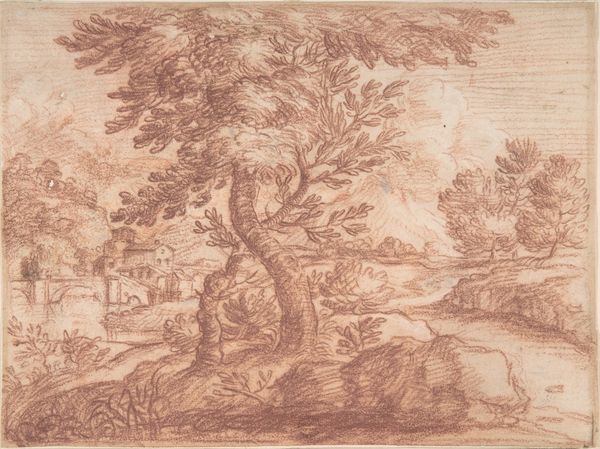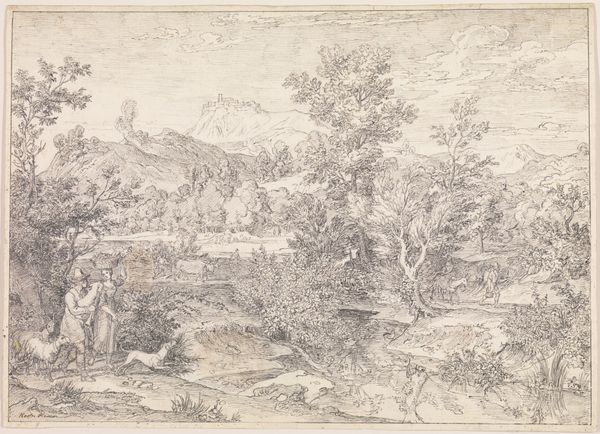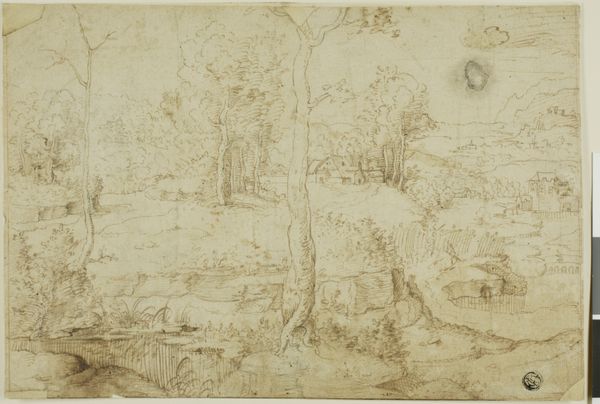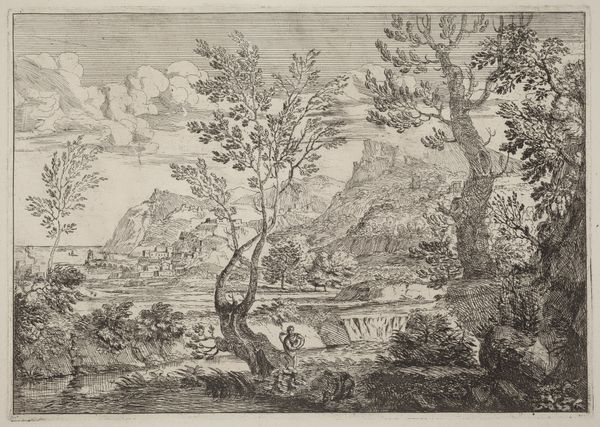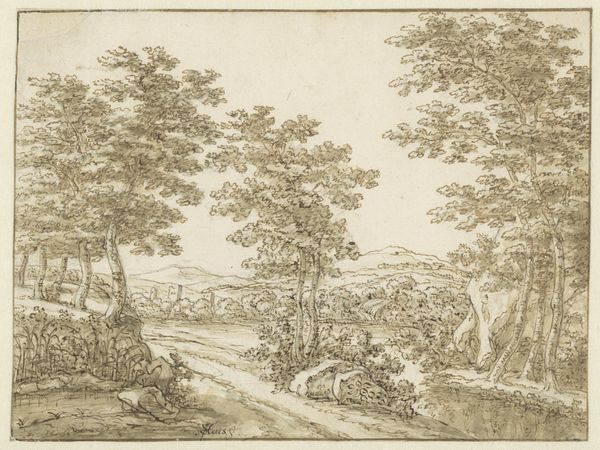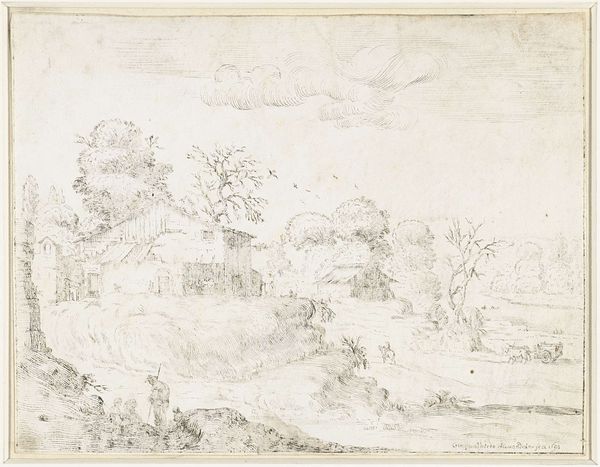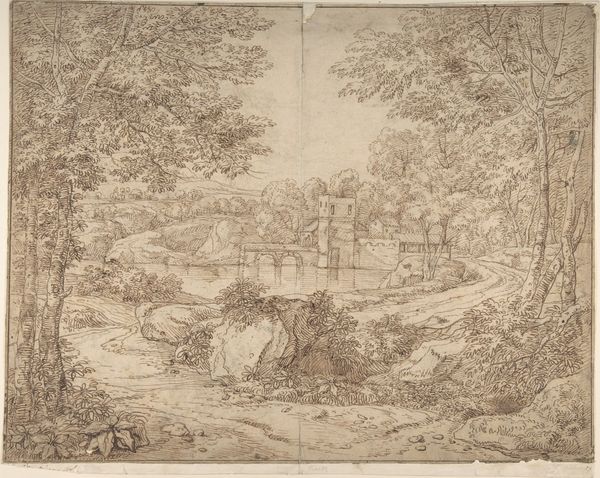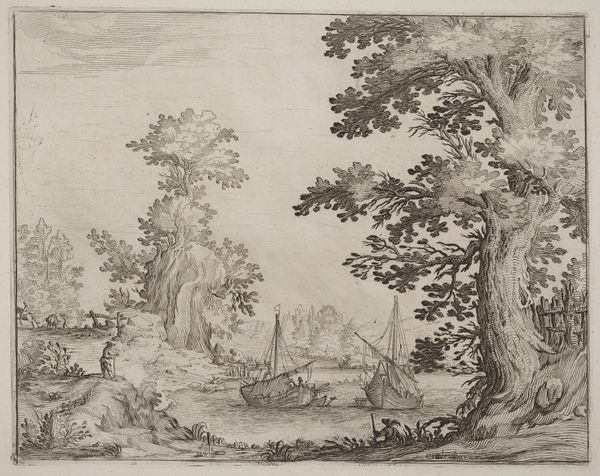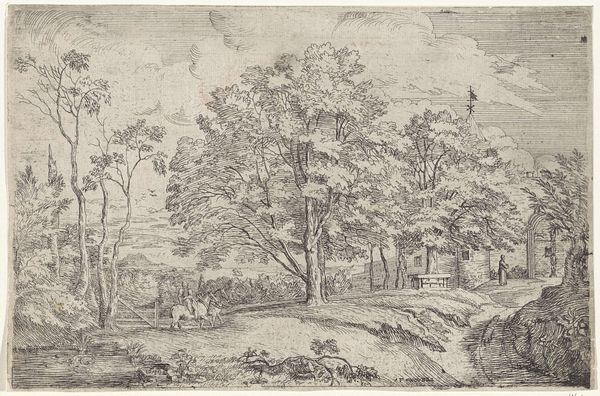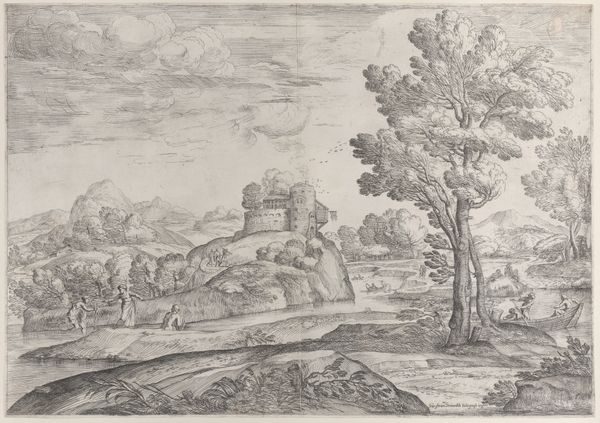
drawing, ink, indian-ink
#
drawing
#
landscape
#
ink
#
indian-ink
#
pen-ink sketch
#
line
#
14_17th-century
#
italian-renaissance
Copyright: Public Domain
Editor: This delicate ink drawing, "Landschaft mit Wasser, Baumgruppen und Gebäuden" is attributed to Giovanni Francesco Grimaldi, likely from the 17th century. I’m struck by how the artist uses such fine lines to create a sense of depth and atmosphere. How do you read this landscape in terms of its historical context? Curator: It's fascinating to consider what landscapes like this meant in the 17th century. While ostensibly a scene of nature, it's vital to recognize these images also functioned as displays of power and control. Who do you think inhabited this space, and for whose pleasure was it cultivated? The classical structures on the horizon and idealized scenery often reflected the wealth and authority of the elite. Editor: So, it’s not just a pretty picture but a statement? The carefully placed trees and buildings seem almost staged now that you mention it. Did this idealization have a direct impact on the land itself, do you think? Curator: Absolutely. Art, especially landscape art, can reveal the ideologies of the time. Think about the labor involved in maintaining such a pristine landscape, and who was excluded from enjoying it. Do you think the drawing hides such power dynamics behind a veil of serenity? It’s important to analyze how this aesthetic served specific social and political interests. Editor: I never really thought of landscapes in this way, as potentially masking social realities. I’ll definitely look at these types of images with a more critical eye going forward. Curator: Exactly. By engaging with these pieces through a contemporary lens, we can unearth deeper meanings and consider the ethical implications of representation.
Comments
No comments
Be the first to comment and join the conversation on the ultimate creative platform.

